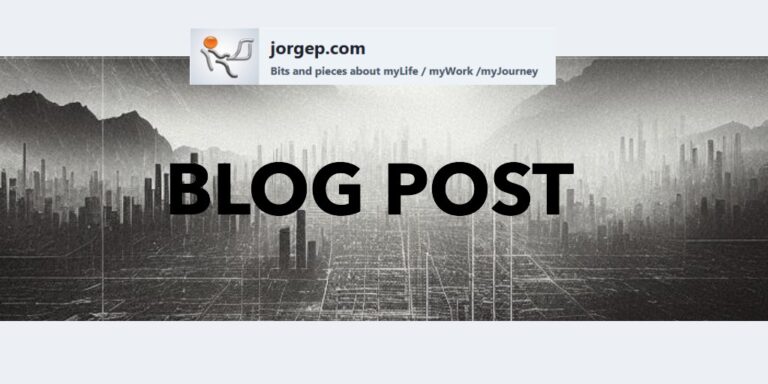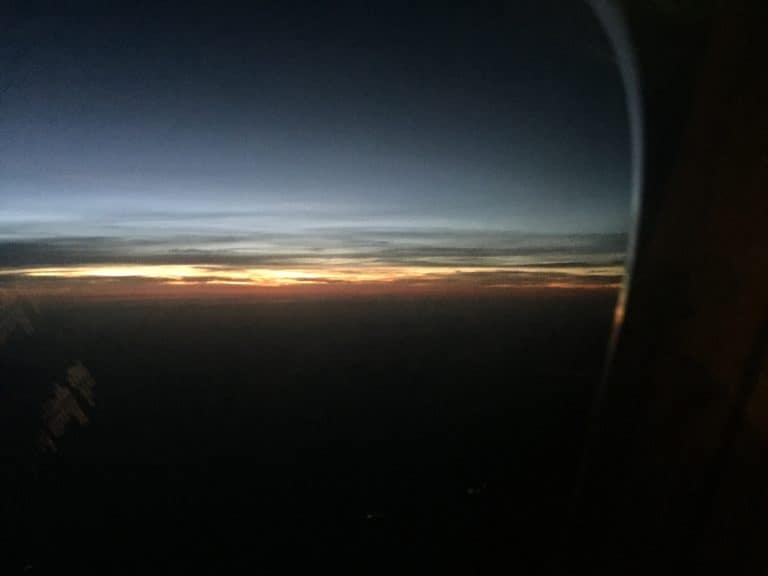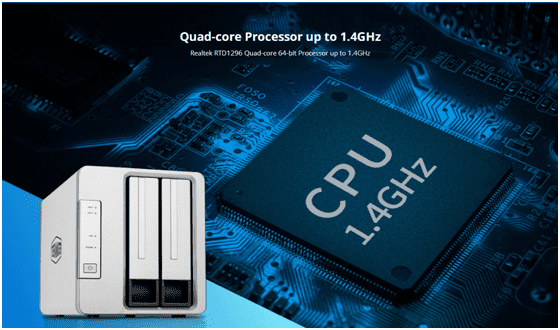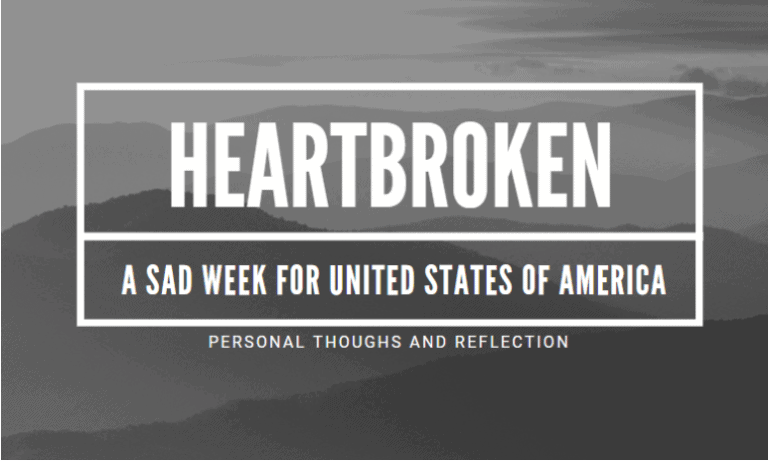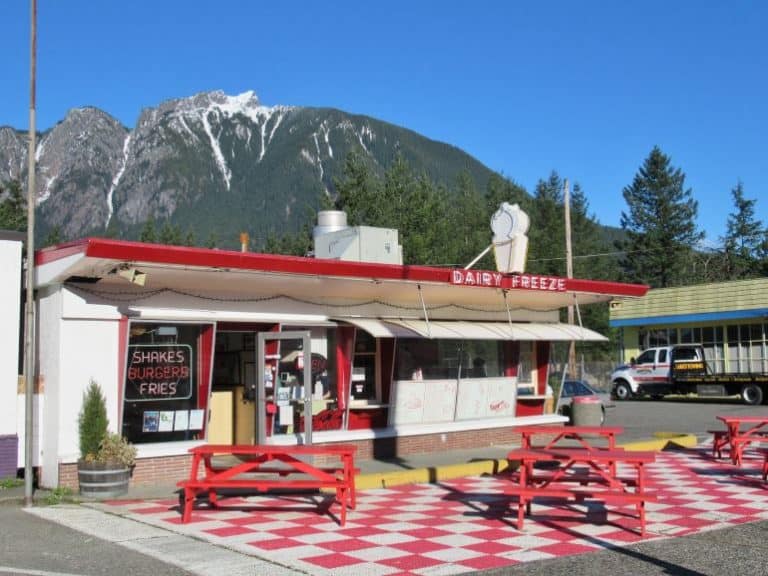My Current Thoughts on NFTs
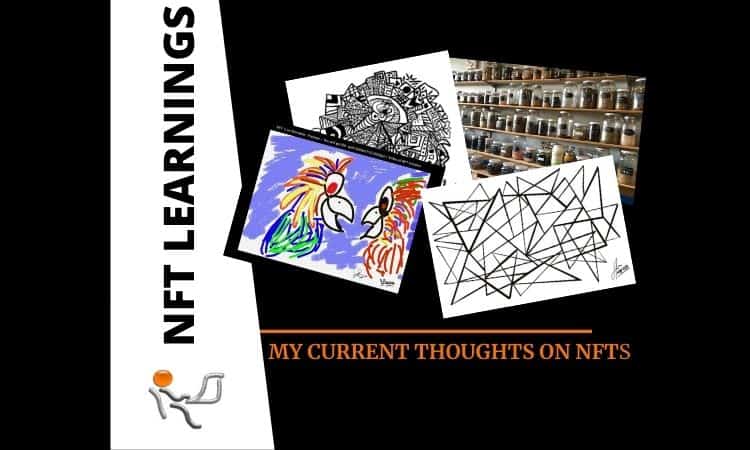
Part of my Learning about NFT Series [ For my personal list of NFT Art Marketplaces see tracking list here ]
I started my journey into understanding non-Fungible-Tokens (NFTs) just a few months back ( My First NFT )and have been learning ever since. I have been learning, researching, investigating and testing how it works, how to sell, where to sell, and how to sell. As an artist ( DoodlingJorge.com ) this is very interesting to me..
Many friends ( / fans 🙂 ) have asked for me to drop more art, but I have not done that yet. Instead I have been on a discovery and understanding quest, which I am now ready to put on put my thoughts so far in this blog post.
NFTs (non-Fungible Tokens) right now is an emerging technology, which is changing quickly. Today listing, buying and selling NFTs is hard. The learning curve is steep and complex. You need to know about blockchains,, crypto-currency, exchanges, digital wallets, gas fees, and much more. Even for a technical person like me, this has been a hard learning curve.
Having said this, I am totally in the camp of, that this technology has already changed our world. It is a matter time before full adoption across many fields. Art is just one use case of this technology. IBM just launched another use of NFT in that case for corporate patents ( press release here ) –
NFTs are not only about Digital Art
There are many other applications outside the digital art that NFT technology applies to. Like in the IBM use case mentioned above, patents are hard to track, and in the best of cases the tracking systems are private and/or regional. Not a good system, but it is a system that is ripe for change. I think many of the NFT concepts apply very well in that space, and many more.
Marketplaces
There are many NFT art marketplaces out there and many more are to come. I created my own tracking list here.
Many of them offer different “features” the way I look at each of them is as different marketplaces “experiments” in which both artists and collectors are trying things out… ( some are trying the limits of it as well).
This takes me back to the early days of computers when so many of us (hobbyist at the time) used parts to put computers together and sell or use them ourselves… [ Remember Byte Magazine was a magazine of hobbyist back then! ] Same thing happened with the World Wide Web (now called the Internet ) So much early experiments back then.
To me, the good old times are back – and I love it!
Having said this, many of the implementations (experiments) will fail and many of the marketplaces will consolidate but the technology will remain. The new renaissance of trials and experimentation will become “normal” and the excitement will end and morph into something new… and a new frontier will open up.
Explaining NFTs and marketplaces to my friends / family?
While NFTs are the product of a technology process, they need a place where they can be traded.
- The best way I have found to explain this to family / friends was with this analogy:
- Lets say I am a farmer that has a tree I grow in my farm. The tree has leaves that when mashed and combined with other “things”, has a great unique flavor. ( the creation )
- I then use it to cook a recipe and share with a couple of friends which they loved it, and asked to get them some of the spice. It is a bit complicated to extract the spice from the tree it grows on, so I enlist and train a couple of people to help me in the extraction process. ( miners )
- The friends talk to other friends and more people want it. ( demand )
- Next level to sell it at the markets ( marketplaces ) It cost time and money to get it there, which varies depending on how far they are, how busy they are ( gas fees )
- Depending on the location of the the marketplace I may be taking different kinds of currency (crypto-currency) which I later will need to change into my home’s currency to pay bills and continue producing ( Digital Exchanges )
Although NFTs have existed for a while, many of the marketplaces for NFT are being created right now. All of them offer the baselines to list/ sell and buy NFTs but they also may offer additional “features” that make them unique and attract / retain customers.
Blockers and Detractors
From what I have seen the most common blockers / detractors that are affecting wide adoption are
1) Hard to sell and buy (steep learning curve)
In order to list your NFT you need to know about crypto currency, digital wallets, blockchains, and so much more. Each of these topics have many roads, side roads, some of which are dead-ends. It is NOT an easy learning curve. Although even if you are a technology-aware person, this is especially true for non-technologists.
Many new market places, Apricot comes to mind, are coming to the rescue and allow you to list, sell and buy without any of the knowledge previously needed in a super simple and easy to use. No knowledge of crypto or wallets and NO gas fees…
2) Expensive to list and buy: GAS Fees are out of control!
Every transaction that is added to a blockchain has a cost associated with it. This is the GAS fee. All blockchains have a GAS fee. The price will depend on how busy they are, and what the blockchain rates are.
Two things about GAS prices: It depends on the blockchain and how busy it it.
Once you are educated and in a marketplace, by far the #1 complain by artists (and some collectors) is the very expensive “blockchain network processing” or GAS fee. This is a fee charged for any transaction that is added to a blockchain. Every blockchain (and there are many!) has a different fee and it is highly dependent on traffic on the network.
The most popular blockchain for creating NFTs today is ETHERIUM which makes it very busy and therefore can be expensive. Keep an eye as to the day of the week and time – A great place to give you an idea of this is the Ethereum Gas Price Tracker
- Side note: Last week I was quoted $1,500 GAS fee to accept an $200 dollar offer on OpenSea which uses ETHERIUM blockchain – by far the most popular one today – NO THANKS – I pass.
There are many marketplaces that offer up gas-less or lazy minting (mintable, opensea, etc), but they are not minting anything until a buy or sell transaction is actually executed, so therefore the items are not actual NFTs, but actually they are potential NFTs, as they are not yet on the blockchain.
Outside the ETHERIUM blockchain, there are many others, including: TEZ, FLOW, WAX, MATIC / POLYGON, RARI, ZIL, BSC, Nifty and many others. Each of these other blockchains follow the NFT standard ERC-721 for non-fundable tokens and most recent the ERC-1155 standard.
3) Not sure what I am selling / buying
A non-fungible token (NFT) is a unit of data stored on a digital ledger, called a blockchain, that certifies a digital asset to be unique and therefore not interchangeable. NFTs can be used to represent items such as photos, videos, audio, and other types of digital files.
Non-fungible token – Wikipedia
Simply stated, anyone can can create an NFT for any digital asset to make it unique and your virtual asset. A digital photo, a word document, a video, an excel spreadsheet, a drawing you created, an email, a digital art piece, music file, anything than can be placed inside the blockchain. The NFT offers indisputable ownership and therefore can be traded in a marketplace.
The original owner sets the basic sell conditions of the original NFT piece. Things like name of the piece, number of editions, copyright transfer (Yes / No) , percent of sale on every resale after original sale.
The concept of selling a digital asset, especially when it may be available already out there, is difficult to grasp, but it is real.
- For creators, this is no different than selling a copy to place on your wall or play on your music player.
- For buyers / collectors on the other hand, if you are looking to own more than just the right “hang on the wall”, and want to use use it for commercial or replication purposes, then you have to look at a piece that it gives you the copyright benefits you are looking for.
4) Ownership vs Copyrights
Access to any copy of the original file, however, is not restricted to the buyer of the NFT. While copies of these digital items are available for anyone to obtain, NFTs are tracked on blockchains to provide the owner with a proof of ownership that is separate from copyright.
Non-fungible token – Wikipedia
As an example, the most expensive NFT piece sold as of this writing was a collection of 5,000 digital art pieces placed in Instagram called Everydays: the First 5000 Days created by Mike Winkelmann, known professionally as Beeple. It was sold for $69.3 million at Christie’s in February 2021, and the owner received rights to display the artwork, but does not receive copyright.
Final Thoughts / Summary:
Aside from the learning curve, when it comes time to creating, selling and buying NFTs it can get complex and EXPENSIVE. I was super excited to see that several new marketplaces that are breaking this barriers of entry ( example: Apricot marketplace) that makes things SUPER easy for both regular creators and collectors to trade NFTs as if they were any other product leaving the complexities behind the curtains.
Update: Just yesterday eBay announced they will begin selling NFTs from approved eBay seller (I still have to check it out) – WOW.
Please let me know what you think about this article on Twitter @jorper98


